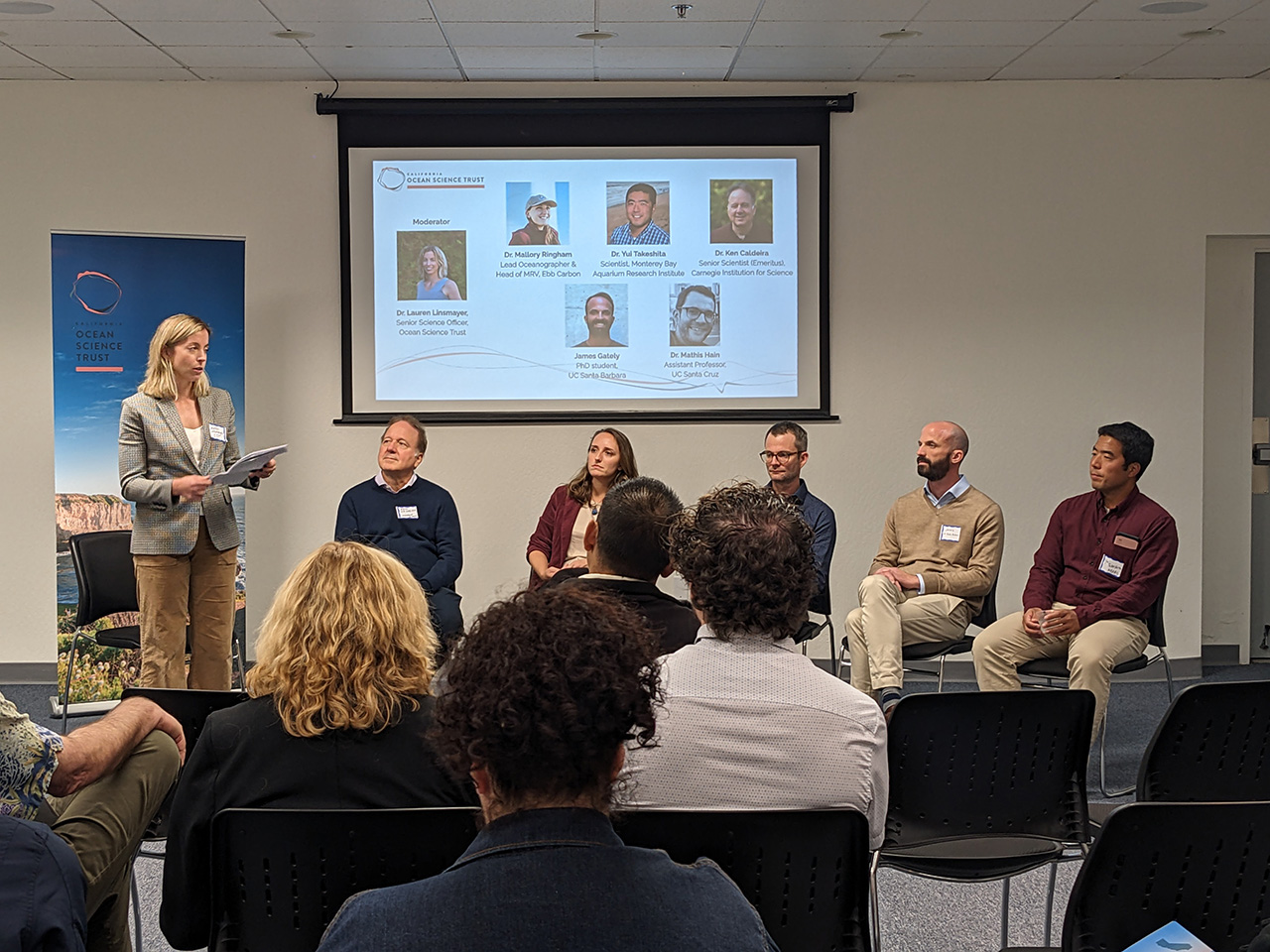From lab-based research in the Bay Area to in-water field testing off the Port of Los Angeles, a number of projects have branched out of California’s academic and scientific institutions in recent years aiming to harness the ocean’s ability to absorb carbon dioxide from the atmosphere. In the midst of this growth, Ocean Science Trust conducted a series of educational tours with the California Legislature toward the end of 2023 to explore these projects and examine the potential role of ocean-based or marine carbon dioxide removal (mCDR).
The proposed climate mitigation strategy aims to amplify the ocean’s natural ability to absorb “legacy” carbon dioxide –remaining from past emissions– through various technological, chemical and biological processes. Scientists worldwide have acknowledged the potential of ocean-based methods in contributing to a portfolio of carbon removal pathways, in order to limit global warming to 1.5°C.
The educational tours provided policymakers with a first-hand look at these emergent technologies, showcasing their research, development, and early testing in California, as well as holding honest dialogue about the potential environmental, ecological, and social implications of each proposed strategy at scale, including critical science needs and unknowns. The first tour featured Ebb Carbon and was hosted by State Senator Josh Becker and with remarks from Assemblymember Diane Papan. The second tour was hosted by State Senator Steven Bradford at AltaSea at the Port of Los Angeles, where both Captura and Equatic are operating pilot projects.






